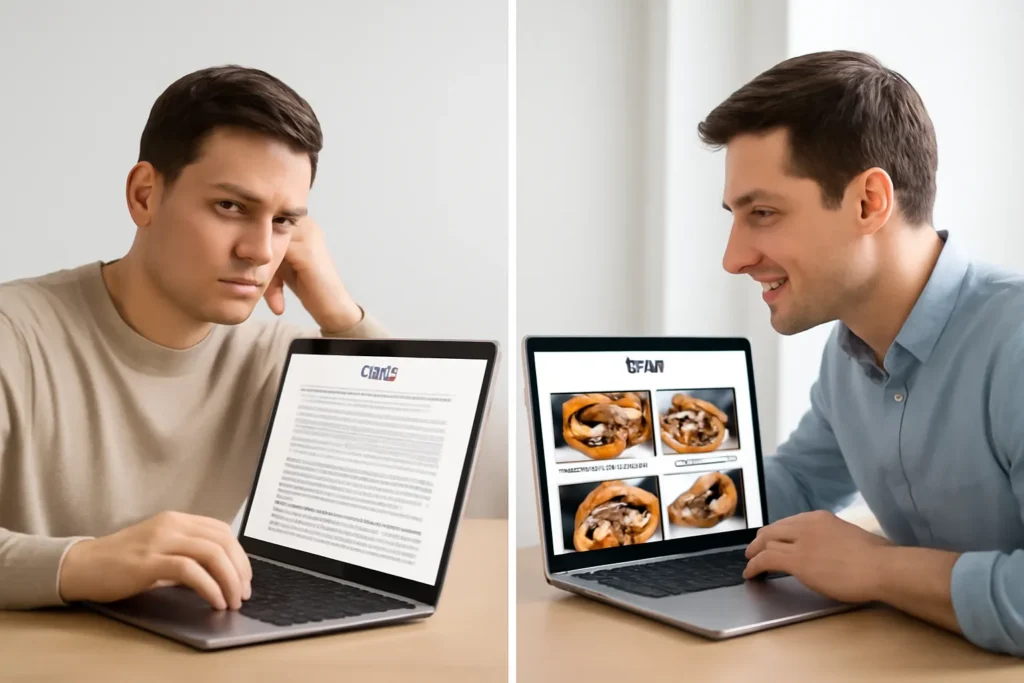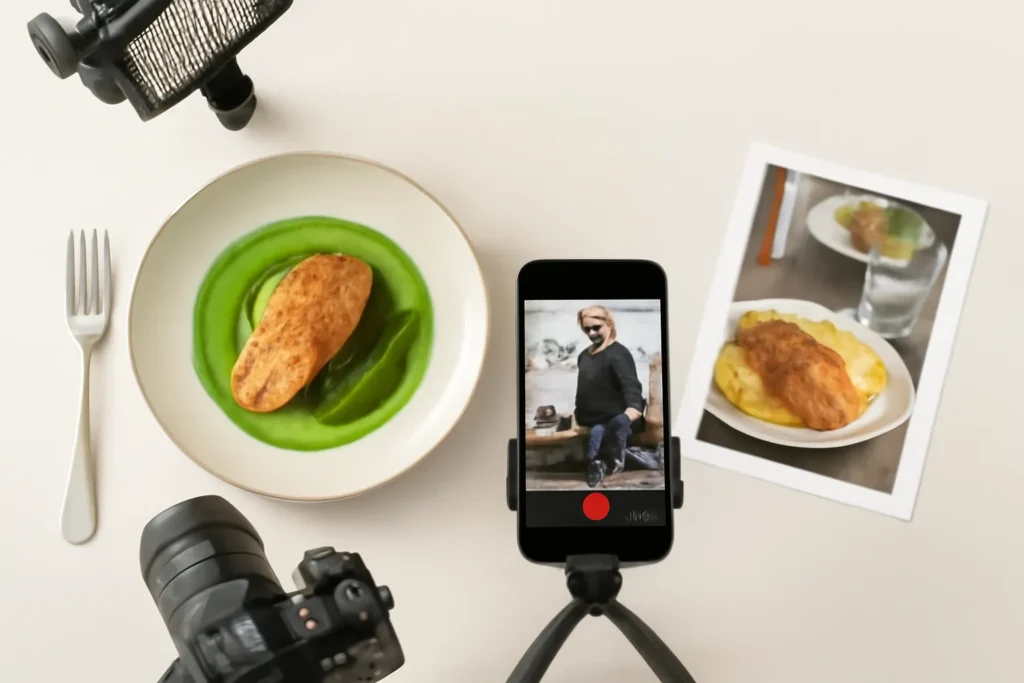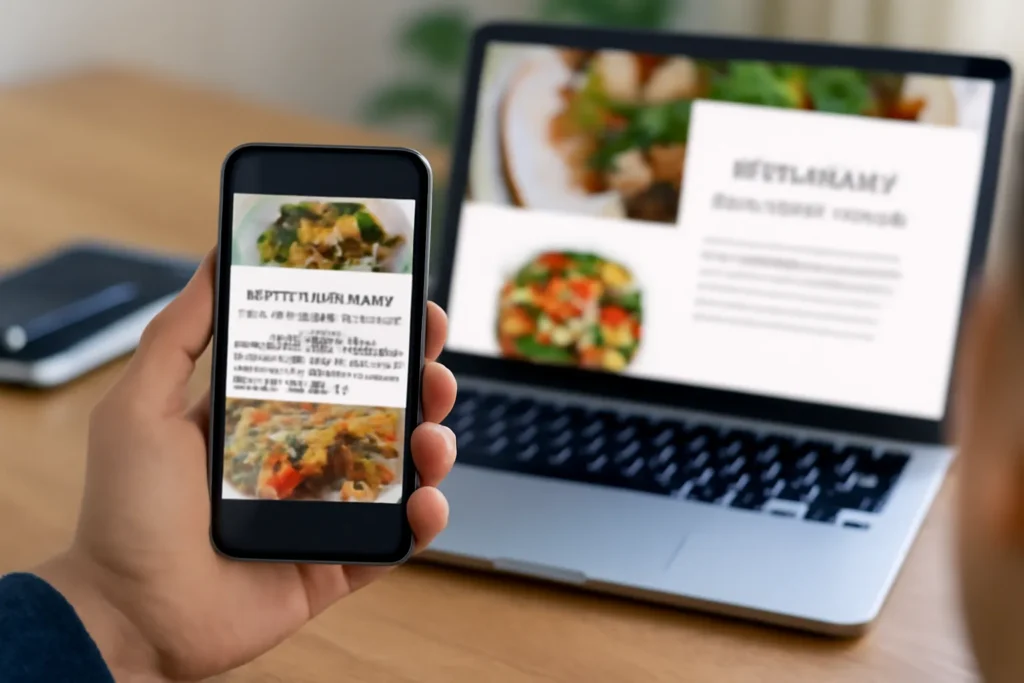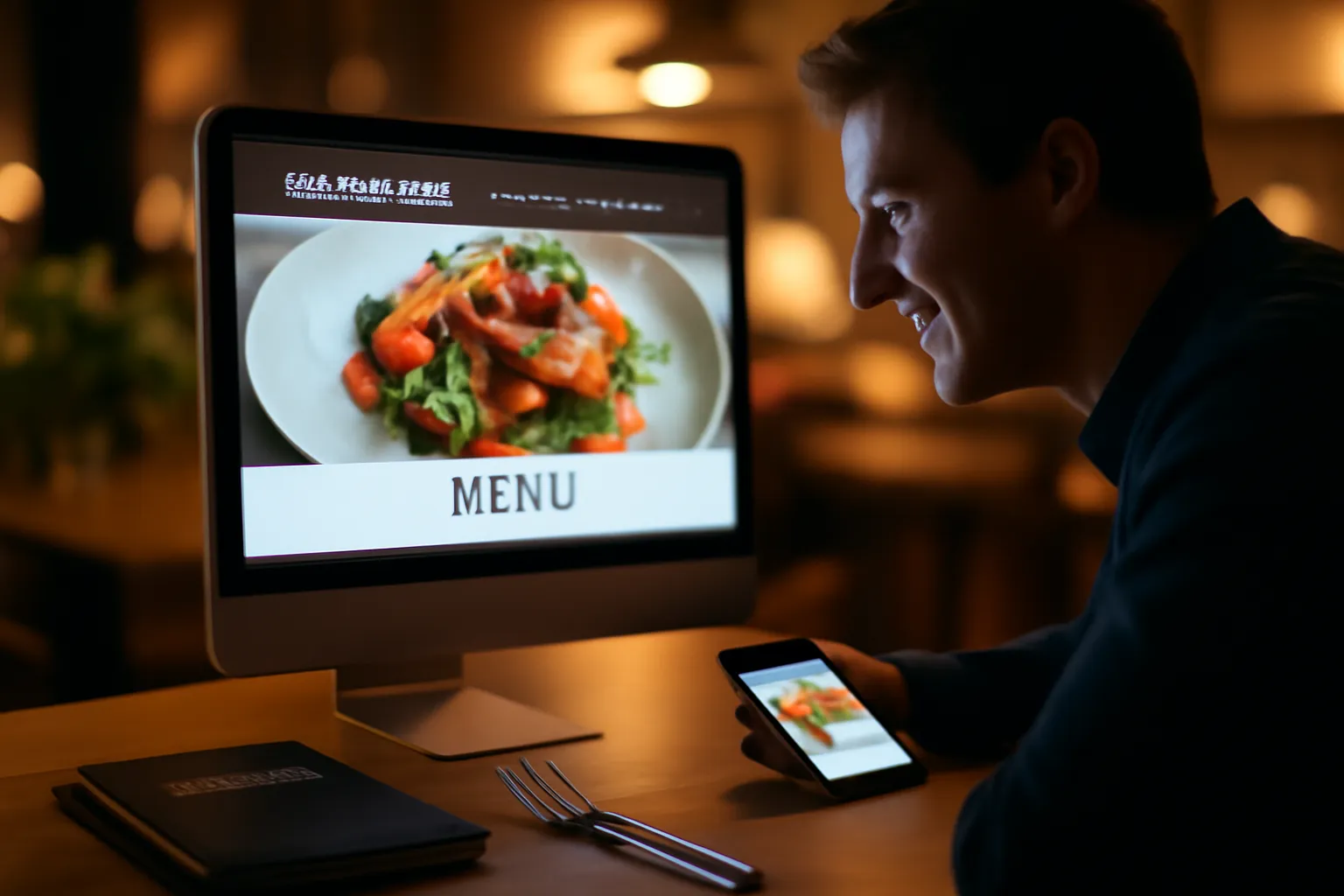Visual storytelling through graphics, images and videos is easier for visitors to absorb than text. Most people browsing restaurant websites want to see what the food looks like and get a feel for the dining experience quickly. And strong visuals help them make that decision faster and with more confidence.
You might be wondering if this requires too much work or a massive budget. But it doesn’t. At Spoonfed Atlanta, we’ve seen restaurants of all sizes improve their online presence with strategic visual storytelling that fits their resources and timeline.
In this article, we’ll cover:
- Why visual stories outperform text every time
- Which content types actually drive bookings
- Three mistakes are costing you customers right now
- Practical ways to measure your results
- Why 2026 raises the stakes even higher
Ready to turn more website visitors into actual bookings? Let’s get started.
What Is Visual Storytelling for Food Websites?
Visual storytelling for food websites means using images, videos and graphics to tell your restaurant’s story instead of relying solely on written descriptions. It’s how you communicate your brand’s personality, food quality and dining experience through visual communication rather than paragraphs of text.
Think about it this way. When someone lands on your site, they don’t want to read three paragraphs about your signature dish. They want to see it. Visual storytelling goes beyond pretty photos to create visual narratives that connect emotionally with hungry customers browsing your menu online.
Visual Content Outperforms Text Every Time

Every second counts when someone lands on your restaurant website, and visuals capture attention far faster than text. There are several reasons for this. Let’s take a look at each one, starting with our brain’s preference for images.
Your Brain Processes Images Faster Than Words
Did you know the brain can identify images in as little as 13 milliseconds, according to MIT? That means visitors will notice a hero image of your pasta almost immediately, often before they read a single word. Text-heavy menus just can’t compete, and your potential diners might click away before they even get to your delicious descriptions.
Food Visuals Trigger Hunger and Emotional Memories
A picture really is worth a thousand words when someone’s deciding where to eat. High-quality food photography and graphic design activate brain regions tied to taste, smell, and positive memories from past meals.
Videos take this effect even further. Clips showing sizzling steaks or steam rising from fresh pizza create stronger responses. This emotional pull through visual storytelling creates a craving before customers even walk through your door, something words can’t replicate.
Social Platforms Favour Visual Posts
The biggest social media platforms heavily favour visual content. TikTok, Instagram, Facebook, you name it. When someone likes a dish, they might share a photo on Instagram or a reel on TikTok the next day. That’s free word-of-mouth marketing for your restaurant. Each share puts your business in front of a new audience who could become your next regulars.
Which Visual Content Types Deliver Results?

The visual content that drives the most restaurant bookings includes professional photography, video content, and user-generated content. Each format serves a different purpose, so knowing which works best helps you prioritise your budget and effort.
Here’s a quick breakdown of the three main visual content types and when to use them:
| Content Type | Main Benefit | Best Use Case |
| Professional photography | Builds credibility | Menu, hero images |
| Video content | Holds attention longer | Behind-scenes, stories |
| User-generated content | Increases trust | Social proof, reviews |
Professional photography establishes credibility immediately, but requires upfront investment in a quality photographer and styling. You need the whole nine yards: proper lighting, composition, graphic design elements and editing to make your dishes look irresistible.
Drawing from our experience working with Brisbane restaurants, these high-quality shots of signature dishes consistently outperform amateur phone photos in driving bookings.
If you want to connect with your audience, video content takes things to a whole new level. A behind-the-scenes kitchen clip or a chef preparing your most popular dish creates authenticity that photographs simply can’t match.
Speaking of authenticity, according to SearchRank, 60% of consumers believe UGC is the most authentic form of marketing. 86% say they trust brands more when they feature real customer content. This authenticity helps turn visitors into diners.
Three Visual Mistakes Killing Your Bookings
Let’s be honest here. Even restaurants with delicious food lose customers daily because of three avoidable visual mistakes. We’ll break down all three below. Let’s start with the first one: stock photos.
1. Stock Photos Destroy Authenticity
You know that generic burger that appears on 50 different restaurant websites? Yes, your customers have seen it too.
When customers see stock images instead of your actual dishes, they question whether your food looks anything like the photos (we’ve all seen that same burger). Generic food imagery and low-quality graphics from stock libraries make your restaurant look unoriginal and untrustworthy, killing that all-important first impression.
Quick Tip: Use your own photos. Even decent smartphone shots of your real dishes beat professional stock photos of someone else’s food.
2. Slow-Loading Visuals Frustrate Mobile Visitors
Large uncompressed files cause pages to load slowly, and visitors abandon before seeing your menu. If your homepage takes more than three seconds to load, you’ve already lost half your potential audience’s attention.
To avoid this problem, compress your photos before uploading them to your site. Image compression solves the speed problem, but there’s another mobile issue many restaurants overlook.
3. Poor Mobile Optimisation Reduces Conversions

According to Think with Google, 89% of dining research is done on mobile before someone visits a restaurant. Yet many websites aren’t fully optimised for these screens, so images that look perfect on desktop can appear cropped or pixelated on phones.
And when visual design doesn’t adapt to smaller screens, it can frustrate users and reduce the likelihood they’ll make a booking.
The fix is simple. Resize the images properly and stay sharp on all screen sizes. Test your site on your own phone before you go live. If the photos look off or the text is hard to read, your customers will notice too.
Measuring Your Visual Storytelling Impact
The best part about visual storytelling is that you can track exactly how much revenue it generates for your restaurant. You’re not guessing whether your new photography works. You’re measuring real results that directly impact your bottom line.
Here are three practical ways to measure whether your visual content is working:
- Time on Page: Track how long visitors spend on your website before and after adding professional photos and graphic content. If people browse your menu for two minutes instead of thirty seconds, your visual storytelling is doing its job. The longer they stay engaged, the more likely they are to book a table.
- Booking Conversion Rates: Monitor how many website visitors actually make reservations. Compare your conversion rate before updating your visual elements to the rate after. In our experience, restaurants switching from text menus to photo-based menus see conversion increases. That difference translates directly to revenue.
- Social Media Shares and Engagement: Keep an eye on how often people share your visual stories or post photos tagging your restaurant. When customers start creating their own content featuring your dishes, you’ve built visual storytelling that resonates. These organic shares become free advertising that reaches potential customers you couldn’t capture through paid marketing alone.
Pro Tip: Set up simple tracking in Google Analytics before making any visual changes to your website. This gives you clear before-and-after data showing exactly what’s working and what’s not worth the investment.
Start Converting Visitors with Visual Storytelling Today
Restaurant websites face tough competition for attention online. It’s because potential customers decide within seconds whether your site deserves their time, so you need to make those seconds count.
With our guide, you now understand why visual stories outperform text, which content types deliver results, the mistakes killing your conversions, and how to measure impact. Put these strategies into action and watch your website turn browsers into paying customers.
And If you’d like expert help building a visual storytelling strategy for your restaurant, contact us today.
